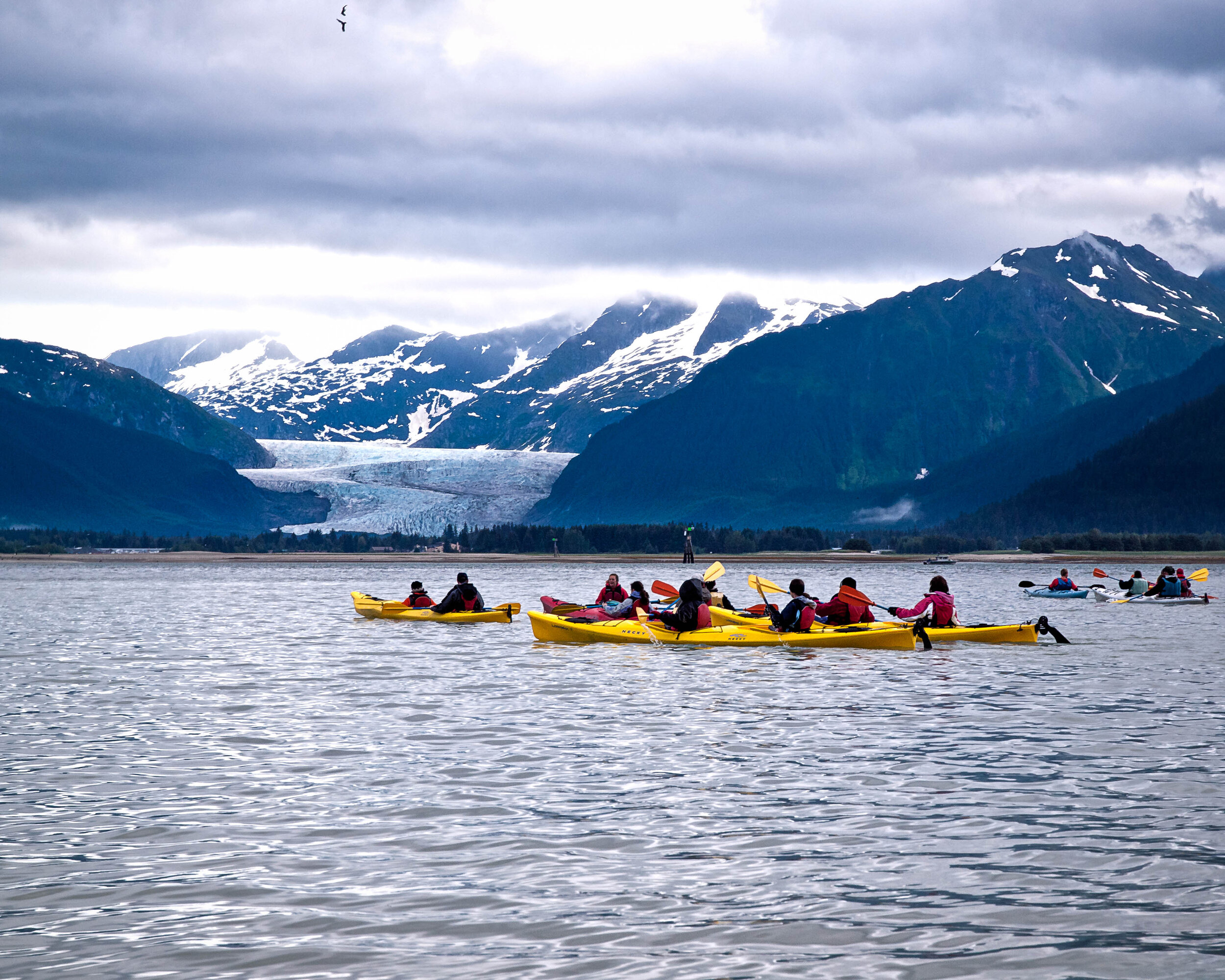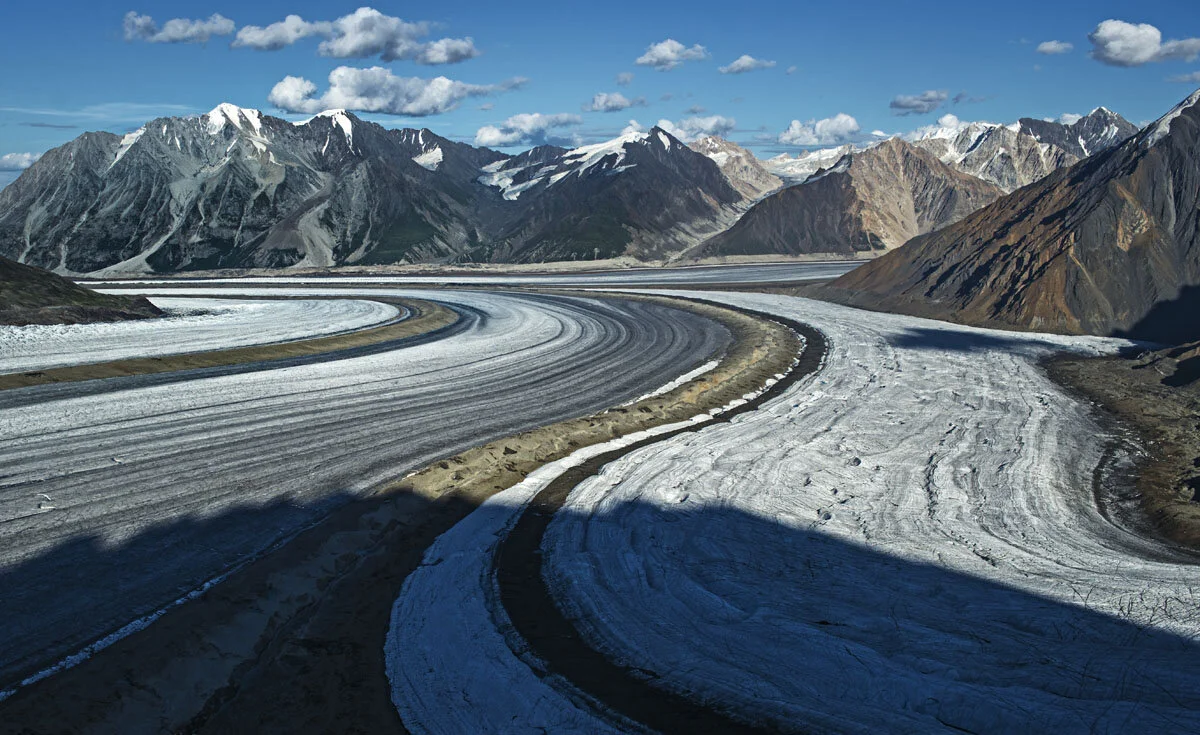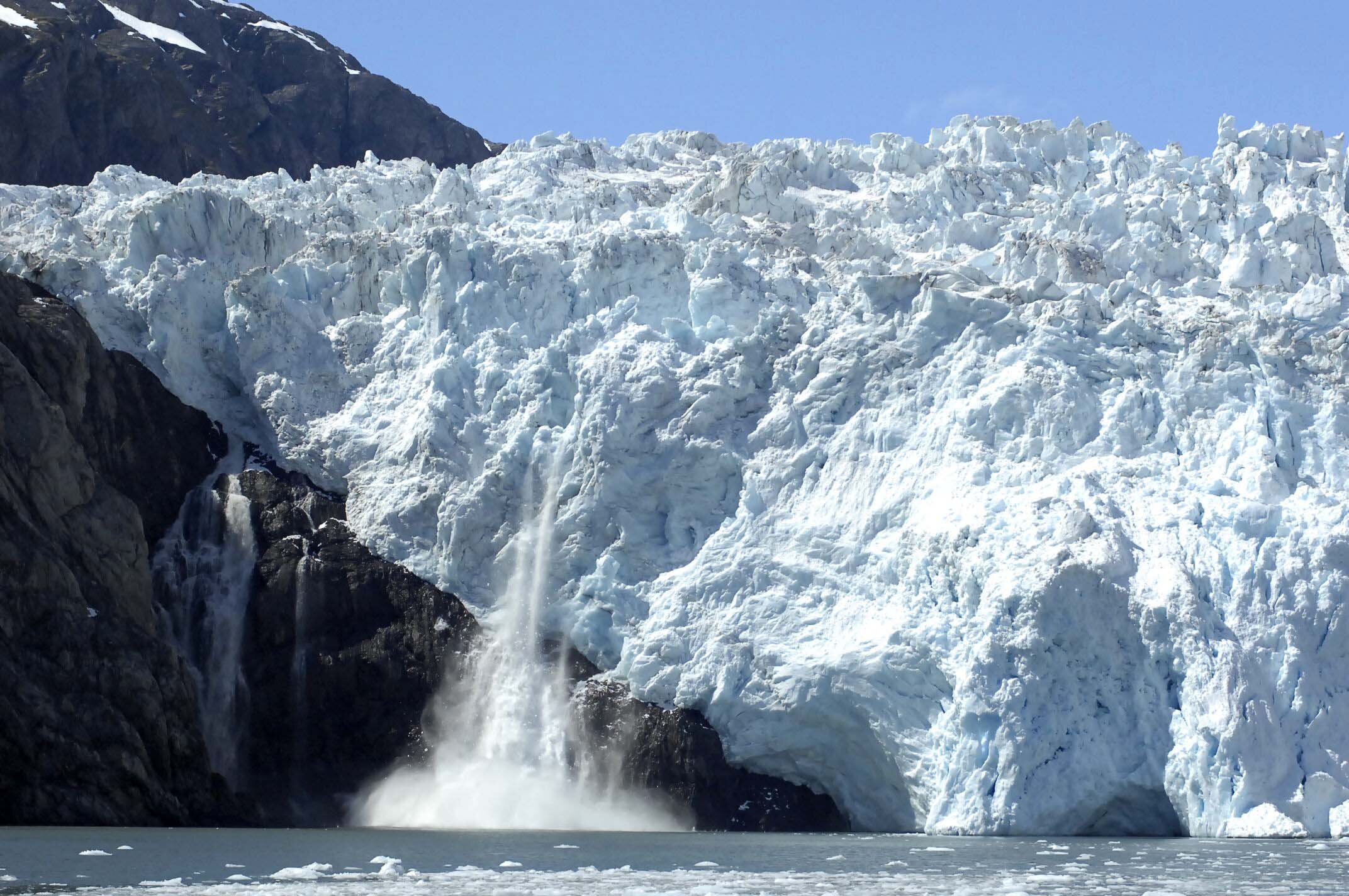Glaciers have long been an object of fascination for many curious travelers and scientists. These frozen rivers, slowly ebbing and flowing past mountains for thousands of years, have become synonymous with Antarctica, Greenland, Patagonia and the Arctic.
One other region which is home to a number of glaciers is Upper Cascadia, an area encompassing British Columbia, the Canadian Rockies in Alberta, the Yukon and southeast Alaska. Given their proximity to the cities of Anchorage, Calgary, Juneau and Whitehorse, many of these glaciers are accessible to curious travelers who do not want to break the bank on a global expedition into an unknown icy world.
While many of these glaciers remain intact, all have been subjected to warm temperatures as a result of climate change, which has caused dramatic melting of ice and changes to the region’s biodiversity.
Regardless, these icy wonders continue to wow and inspire hundreds of thousands annually. For those interested in taking a glimpse into the frozen world, below is a list of some of the most popular glaciers in the Pacific Northwest.
Mendenhall Glacier — Juneau, Alaska
Kayakers in Mendenhall Lake, with the mouth of the Mendenhall Glacier in the background. Peter Lee. CC BY-NC 2.0.
One of the most accessible glaciers in North America, the Mendenhall Glacier is located just12 miles outside of downtown Juneau, Alaska. The glacier is a defining feature of the Tongass National Forest and draws around 500,000 visitors annually.
While visitors to the park cannot walk on the glacier itself, the forest is home to a number of activities and viewing areas which allow for a more personalized viewing experience. Kayaks, telescopes, ranger talks and a movie are available at the visitor center. Likewise, those interested in hiking can take one of five trails around the forest, with the Photo Point Trail offering the best views.
Given its proximity to Juneau International Airport, many glacier hunters visit Mendenhall before hopping on a seaplane or helicopter to head to the nearby Herbert and Taku glaciers in addition to Glacier Bay National Park.
Kaskawulsh Glacier — Kluane National Park, Yukon
The confluence of the south arm of the Kaskawulsh Glacier. Richard Droker. CC BY-NC-ND 2.0.
Located in the St. Elias Mountains in Kluane National Park, the Kaskawulsh Glacier is one of the largest and most visited glaciers in the Yukon. While this glacier is a bit more remote—the national park is about 100 miles away from Whitehorse, capital of the Yukon and the nearest city with an international airport—many glacier hunters undertake the long trek to enjoy hiking, skiing and snowshoeing.
The Kaskawulsh Glacier in recent years has begun to retreat due to rising temperatures as a result of climate change. The St. Elias Mountains lost 22% of their ice cover between 1957 and 2007, and the Kaskawulsh Glacier specifically lost 6.6 square miles of ice between 1977 and 2007. While the region has not met the same fate as has Glacier National Park in Montana, which lost the majority of its glaciers over the past 50 years, visitors interested in visiting Kaskawulsh are encouraged to do so sooner rather than later.
Kenai Fjords National Park — Alaska
The Holgate Glacier in Kenai Fjords National Park. National Parks Service of Alaska. CC BY 2.0.
Kenai Fjords National Park, which is situated 130 miles south of Anchorage near Seward, Alaska, is home to a quarter of the state’s glaciers. While the park’s icefields have receded due to climate change, many glaciers are still intact, drawing in hundreds of thousands of visitors annually. Popular glaciers in the icefield include Bear Glacier, which is the longest in the park, and Exit Glacier, the only one accessible by road.
Visitors to the park can hike the Harding Icefield Trail, which is an intense 8.2 mile round trip trail that showcases the park’s glaciers, fauna and vegetation. Those interested in visiting the park should opt to take the Alaska Railroad, which runs daily between Anchorage and Seward and offers immaculate views of the surrounding fjords, forests and mountain ranges which lie between the two cities.
Ha-Iltzuk Icefield — British Columbia
Icefields in British Columbia as seen from the International Space Station. NASA’s Marshall Space Flight Center. CC BY-NC 2.0.
The Ha-Iltzuk Icefield is the largest icefield in the Coast Mountains of British Columbia. The region is home to a number of glaciers, lakes, rivers, mountains and volcanoes. Given that the field is in a remote part of the province and is not accessible by road, most visitors opt to charter a helicopter for excursions.
While camping in the park, many choose to visit the Silverthrone and Klinaklini glaciers, both of which flow toward the south, as well Mount Silverthrone, which is surrounded by a number of smaller, unnamed valley glaciers.
Athabasca Glacier — Alberta
The Athabasca Glacier in the Columbia Icefield. Lord Lucan Lives. CC BY-ND 2.0.
The Athabasca Glacier is one of the six principal toes of the Columbia Icefield in Alberta’s Jasper National Park. The most visited glacier in North America, Athabasca’s four-mile length is home to some rare species of animals including flying insects which can survive in minus 30 degrees Celsius.
The glacier has receded due to climate change, losing 0.9 miles of length over the past 150 years, when markings of glacial retreat first began to be measured. The glacier currently loses an estimated 16 feet each year, and is expected to disappear near the end of the century. Visitors to the park are encouraged to be mindful of the flora and fauna and must take efforts to ensure that none of the biodiversity is disturbed by their excursions.
Jacob Sutherland
is a recent graduate from the University of California San Diego where he majored in Political Science and minored in Spanish Language Studies. He previously served as the News Editor for The UCSD Guardian, and hopes to shed light on social justice issues in his work.















